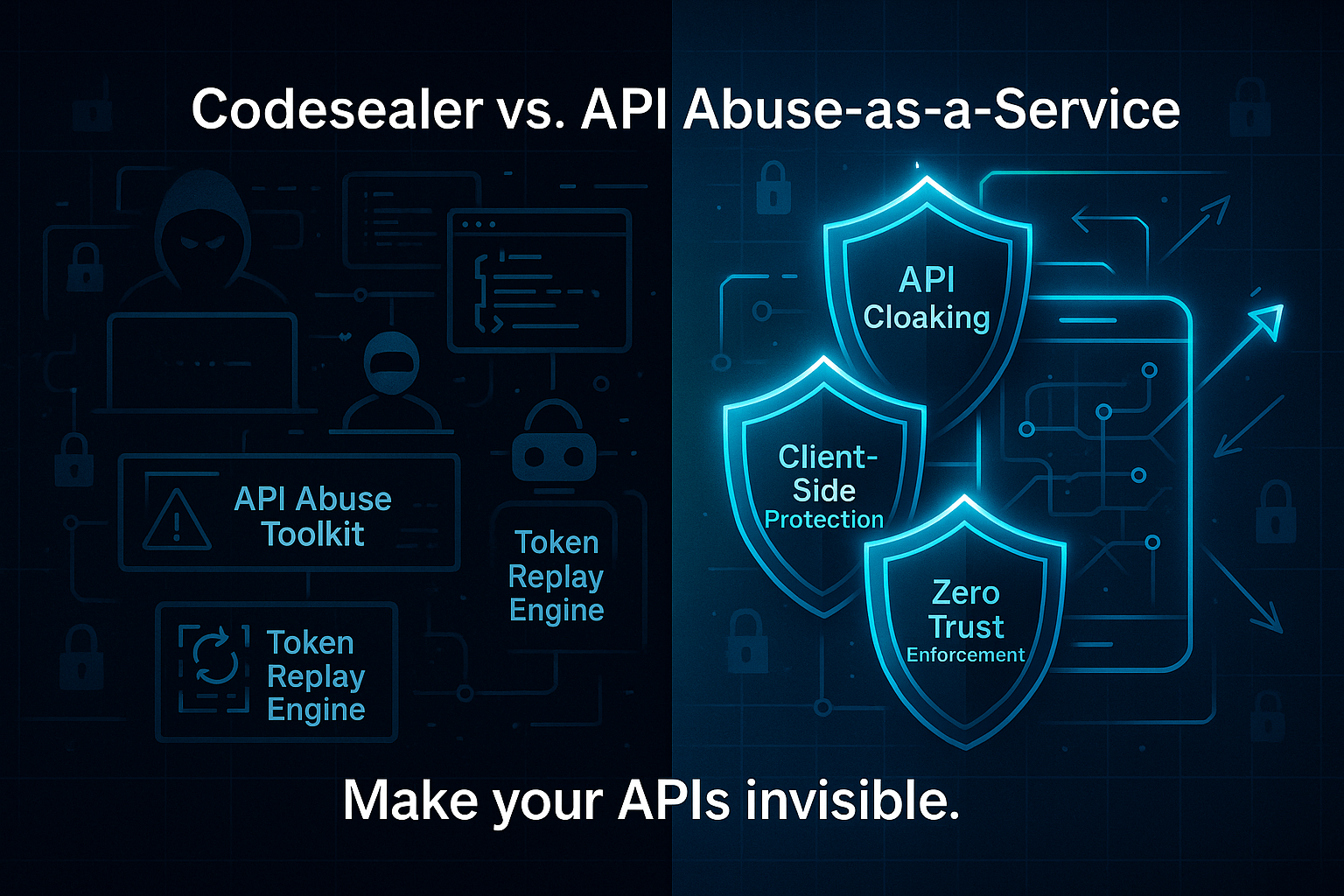
The Rise of API Abuse-as-a-Service: How Underground Markets Are Industrializing API Attacks
A New Era of API Threats
In the past, exploiting application programming interfaces (APIs) required a certain level of technical sophistication. Attackers needed to manually reverse-engineer endpoints, decode traffic, and develop tooling to automate their activity. Today, that barrier has nearly vanished. A new underground economy is rapidly expanding—API Abuse-as-a-Service. These criminal offerings industrialize the process of attacking APIs by commodifying tools and data that lower the entry bar for anyone looking to exploit exposed endpoints.
Dark web forums and Telegram groups now advertise subscription-based services that provide automated scripts for credential stuffing, API scraping, and account takeovers. In some cases, attackers even offer “scraping-as-a-service” APIs that provide structured access to protected datasets extracted from high-value web targets. What was once manual and bespoke is now packaged, monetized, and deployed at scale.
Inside the Underground API Attack Economy
A closer look at these underground services reveals a well-structured supply chain. At one end are actors who specialize in harvesting API specifications—either through open source intelligence or active probing. These specifications are fed into tools that mimic legitimate clients, avoiding detection by simulating mobile headers, injecting randomized tokens, or using browser fingerprinting to bypass behavioral analysis.
On the other end, operators sell pre-built toolkits that are continuously updated to adapt to changes in authentication flows and API structure. These often include built-in retry logic, token refresh sequences, and anti-captcha bypass techniques. The modularity of these kits allows even low-skill attackers to carry out persistent API abuse with minimal effort.
Most dangerously, attackers are moving toward API-specific botnets that are trained to behave like legitimate users. They exploit the predictability and transparency of API traffic to extract data, hijack sessions, or overwhelm business logic in targeted ways. These botnets are resilient, decentralized, and capable of rotating IPs, devices, and user agents to blend in with genuine traffic.
Why Traditional API Security Fails Against These Attacks
Traditional security solutions such as Web Application Firewalls (WAFs) and API gateways were never designed to operate under this level of targeted abuse. These solutions rely heavily on signature-based detection or rate-limiting strategies. However, the attackers behind API Abuse-as-a-Service understand these defenses intimately and actively develop bypasses.
For example, credential stuffing attacks now operate at slow rates, spread across thousands of IP addresses and device fingerprints to stay under rate-limiting thresholds. Likewise, scraping tools are mimicking user behavior at the JavaScript level, making them indistinguishable from real clients at the edge of the network. Moreover, the use of TLS doesn’t prevent attackers from accessing and analyzing traffic once they compromise client-side applications.
The failure to secure APIs within the context of the client allows attackers to observe, replicate, and eventually exploit the application’s logic and endpoints. This is the primary weakness that modern attackers are leveraging, and it’s the vector most overlooked by traditional perimeter defenses.
How Codesealer Neutralizes API Abuse-as-a-Service
Codesealer approaches API protection from a fundamentally different perspective—by embedding security within the client itself. Unlike WAFs that inspect traffic at the edge, Codesealer injects security at the application layer, where it can actively obfuscate API routes, encrypt payloads beyond TLS, and control how application logic is exposed to the outside world.
With API Cloaking, Codesealer prevents attackers from learning the true structure of the API. Endpoints are hidden, tokens are obfuscated, and requests are dynamically altered to prevent replayability. Even if an attacker reverse-engineers the mobile app or web frontend, they will only see scrambled traffic patterns that are meaningless without the protected runtime environment.
Client-Side Hardening ensures that attempts to tamper with the application—via instrumentation tools, proxies, or debuggers—are detected and mitigated in real time. This prevents the extraction of API tokens, keys, and session identifiers that are commonly traded in underground forums.
Furthermore, Codesealer’s Zero Trust API perimeter ensures that traffic cannot be replayed or redirected from unauthorized environments. Requests must originate from a verified, protected client. This undermines the entire business model of API Abuse-as-a-Service by making stolen or scraped data useless outside the legitimate application context.
Conclusion
API Abuse-as-a-Service is not a theoretical risk. It is a fast-growing industry that is already impacting major businesses across finance, retail, travel, and media. As the economics of API abuse shift in favor of attackers, organizations can no longer rely solely on perimeter-based solutions.
Codesealer’s in-app protection model disables the attacker’s advantage by making the API itself invisible and inaccessible to untrusted environments. In an age where attacks are commoditized and automated, the only effective defense is to deny the attacker visibility and control.
